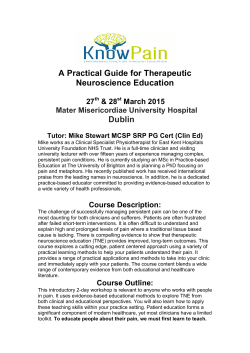
birds-eye» textures in some Norwegian pyrrhotite
Note on «birds-eye» textures in some Norwegian pyrrhotite-bearing ores. By Per Chr. Sæbø, Thor L. Sverdrup and Harald Bjørlykke. Witli 3 tlFureB in tlie text. Abstract. Three specimens, one from Råna, Nordland County, one from Lillefjellklumpen, Grong, Nord-Trøndelag County and one from Karmøy, Rogaland County, have been examined in polished sections. They all show the t^pical "birc!B-exe" texture3 in the p^llliotite, a texture not previously reported in Norwegian p^llnotite-bearln^ 0568. The localities are plotted on the key map, Fig. 1. Råna. The specimen from Råna is a weathered pyrrhotite-bearing il meno-norite. The rock represents a titanium-rich facies of the peri dotite mass located just north of the little lake Bruvann on the western contact of the Råna norite field (Foslie, 1920). The ilmeno-norite crops out on the northern contact between the ultrabasics and the NoliteB. The zone has been expoBe6 to poBt-ore movementB. The rock consists of olivine, bronzite, augite, amphibole and plagioclase in var^in^ amountB. The plimar^ ore mineralB are p^rrnotite, pentlan6ite, cnalcop/rite, cnromite, ilmenite, and rutile. 3catterecl marcaBite grains were isolated from the non-magnetic fractions (Franz isodynamic magnetic separator) and identified by means of X-ray powder pattern. The p^rrnotite 3nowB the tlame-like b06j68 of y3-pyrrhotite in a matrix of a-pyrrhotite. as described by Scholtz (1936). This relation is often found reversed in the ores of Råna, a8 already reporter by Schneider hohn and Ramdohr (1931). The same reversed condition is also re ported by Vokes (1957) from the Birtavarre ores. Polished sections show in one case remarkable examples of "birds-eye" textures due to supergene alteration as described by Schneiderhohn and Ramdohr (1931). Marcasite starts to grow parting planes nearly 1 to the (0001) 206 Fig. I. 11. 111. l. Key map showing the situation of the localities. Råna, Nordland County. Lillefjellklumpen, Nord-Trøndelag County. Karmøy, Rogaland County. Nøkkelkart med lokalitetene. I. Råna, Nordland. 11. Lillefjellklumpen, Nord-Trøndelag. 111. Karmøy, Rogaland. cleavage of the pyrrhotite (translations along twin planes, according to Schneiderhohn and Ramdohr), and occasionally along the (0001) cleavage. The periphery of the alterated zone forms an ellipsoid, the long axlß of vvkick is parallel to the parting plane. The ellipsoids may 207 show excellent concentric growth, the central part of which shows com plete isotropy and consists of pyrite. The marcasite shows only weak anißotrop^ on account of the extremel^ Bmall Bi?e of the mineral grains. During the growth ot tne ellipsoids along the parting planes they ma^ join and form lon^ ilre^ular ban<^B a!on^ the tlactureß. As a consequence of the polishing of the specimen the pyrrhotite otten drops out and leaves the marcasite and pyrite as ribs in the former pyrrhotite grains. The other minerals are not affected during the alteration of the pyrrhotite. Lillefjellklumpen. One polished Bection from a diamont drill core (B.h. 1, — 8.10 m) from the nickeliferous pyrrhotite-ore at Lillefjellklumpen, Grong, de scribed by Foslie (1931), shows the "birds-eye" textures well developed. The specimen consits of pyrite, pyrrhotite, chalcopyrite and mag netite. Secondary pyrite and marcasite are found in the altered areas of pyrrhotite. The "bilclB-e^e3" start to grow along broad irregular fractures in a manner much like that found in the Råna ore, but the alteret areas are as a rule more near!)' spheroids than ellipsoids. The "birds e>eB" are otten clevelopecl onl^ laterall^ along the tractul-eB, 80 that only parts of the spheroids are found. (See Fig. 2.) The "birds-eyes" show rhythmic, concentric growth and the alter ed areas consist mainly of pyrite. Otten several alteret areas grow together and form irregular patches in the pyrrhotite. The secondary sulfides of these areas tend to recrystallize and form more homogenious aggregates of marcasite. This mascaBite is slightly whiter than the pyrite and shows strong anisotropy, the color shifting from bluish to reddish white. Karmøy. The ore samples from Karmøy comes from one of the thin pyrr notite-be6B in the AleenBcnitB in the noltn-eaBtern part of the island (Reusch, 1888). The polished section shows the "birds-eye" texture in the same manner as tne I.jlletjelll<lumpen ore Bample. At the con tact between the marcasite and the pyrrhotite there occurs another mineral as the first alteration product of the pyrrhotite, in a way very 208 Fig. 2. Birds-eye textures in the Lillefjellklumpen ore. The altered areas in the allotriomorphic pyrrhotite conBiBtB mostly of pyrite. One nicol. ca. 150 x. 6l>ciF-e^e ie^F/u/'e/' i />///e//'e///c/um/)enF malm. De omvanaVe^e områder i den allotriomorfe pyrrhotite består hovedsakelig av pyrite. En nicol. ca. 150 x. similar to that described by Schneiderhohn and Ramdohr (1931) and Foslie (1950). This mineral also occurs along the (0001) cleavage in a way very similar to that described by Vokes (1957). The mineral from Karmøy is greyish, slightly blue at the immediate contact with the pyrrhotite, apparently isotropic. It developed an irregular cleavage pattern; one of the clireotionB is parallel to the basal cleavage of the pyrrhotite. This is well shown in Fig. 3. On account of the minute grain-size it is not possible to identify the mineral by ordinary X-ray powder methods. The mineral reported by Schneiderhohn and Ramdohr (1931) and Foslie (1950) is, however, strongly anisotropic. It shows many similar itites to the new rhombohedral ironsulfide smythite, Fe3S4, described by Erd, Evans and Richter (1957). This is supported by the optical spectrogram (Foslie, 1950), tåken by Prof. I. Oftedal, of the pyrrho- 209 Fig. 3. Birds-eye textures in the Karmøy ore. The alteret areas in the allotrio morphic pyrrhotite consist mostly of pyrite. The light coronas of the unknown mineral are well shown. One nicol. Ca. 150 x. Birds-eye teksturer i Karmøy malmen. De <?Ml^a/lck/e/e områder i den allotrio morfe pyrrhotite består hovedsakelig av pyrite. De lyse koronaene av det ukjente mineralet vises meget tydelig. En nicol. Ca. 150 x. tite marcasite associations. Iron is the only metal present, except for extremely small amounts of Mn, Ni and Co. Furthermore the two minerals, smythite and pyrrhotite are structurally closely related (Erd et al., 1957). Recently Birks, Brooks, Adler and Milton (1959) in a very inter 68tin^ paper leporteck a valleriite-like iron sulfide from the ore of the Machinaw Mine, Washington, previously described by Milton and Milton (1958). The iron Bulpnici6 wnicn ma^ be an uncjeBclibe6 mine ral, shows, however, strong, both chemical and optical; similarities to smythite. It l8nopecl tnat Lilciß an 6co-woll<elß nave tlie opportunit^ to continue tneir important Btu6/ ot tniß iloNßultjcle. It tliiß mineral 14 210 realis turnß out to be Bmvtnite, it woulcl zive invaluable intormation about tne temperatureß ot tormation ot variouß tvpeß ot Bulticle bearin^ oreß. The mineral from Karmøy is, however, probably not smythite. It may be a highly metastable phase of Fe3S4 with spinel structure. Many attempts have been made to synthesize this phase, according to Erd et al. (1957), but witnout an^ BucceBB. poBBible preBence ot Bmvtnite 28 an intermeciiate alteration prociuct alon^ tne line ot Bulpnul-enlicnment trom pvrrnotite to marcaBlte or pvrite woullH make tne replacement proceBB more continuouB. Conclusion. "dil6B-e^e" texwl6B are, accorclin^ to 3cnnei6ernonn ano! (1931) alwavB touno! near tne Burtace ot tne pvrrnotite bearin^ ole-bo6ieB a 8a verv earlv Bta^e ot tne oxiclation and alter ation ot tne ore. On account ot tne relativelv recent ot I^or v^av onlv tew remnantB ot tne leacneci an6oxi6i2e6 are toun6. it mav be expecte6 tnat tne renewecl oxiciation an6alteration ot our oreboc!,ieB trequentlv will be traceo! a 8 — an6a!8o a8otner alteration textureB Buen a 8tnoBe reportecl by (1951) an6Vol<eB (1957). concentric ot tne "bil^B-eveB" reBultB in textureB tnat reBembl6B verv mucn tne 80-called collotorm textureB in Becjimentar)s pvrite be6B (otte6anl, 1958), but tne development ot tniB texture i 8 entirelv disserent. (^ollotorm textureB or zel-textul6B in pvrrnotite-bearinF oreB, nowevel, Bnoul6 be caretullv Btuclieo! to deter mine tne l-elationB ot tneir tormation. Acknowledgements. We are indebted to Dr. P. H. veitan for correcting the English text. Thanks are also given to Miss B. Mauritz who made the photo graphs. 21 Sammendrag. En notis om de såkalte "birds-eye" teksturer i noen norske pyrrhotitej'ørende malmer. Pyrrhotite-førende malm fra Råna, Nordland, Lilleklumpen, Grong, og Karmøy viser vakre eksempler på de såkalte "birds-eye" texturer i pyrrhotiten. "Birds-eyes" er mer eller mindre ovaloide, kon sentrisk oppbygde områder av sekundær pyrite og marcasite, dannet ved den begynnende oksydasjon og omvandling i pyrrhotite-førende malmers utgående. Vårt land har vært utsatt for en relativt sen og kraftig iserosjon som i stor utstrekning har fjernet utlutningssonen og oksydasjonssonen over våre sulfidmalmer. Vi må derfor vente å finne "birds-eye" teksturer og også andre omvandlingsteksturer, nærmere beskrevet av Foslie (1950) og Vokes (1957), som et tegn på en begyn nende oksydasjon og omvandling. "Lil6B-eve"-tekBturen6 likner me^et pa 6e såkalte kollotorme tekBturer i ZeciimentZere pvrite-malmer. eie kollotorme tekBturer eller "Fel"-tekBturer opptatteB som Bvn^enetiBke dannelser (Otteclanl, 1959). binner man konsentriske teksturer i pvrrnotite-wrencie malmer rna clisse unclerB«3keB ne»ve tor a bringe eie tornolcl pa elet rene. References. Birks, L. F., Brooks, E. J. and Adler, 1., Milton, Ch., 1959. Electron probe analysis of minute inclusions of a copper iron mineral. Am. Min. Vol. 44. p. 976—978. Erd, R. C, Evans, H. T., and Richter, D. H., 1957. Smythite a new iron sulfide and associated pyrrhotite from Indiana. Am. Min. Vol. 42, p. 309 333. Foslie, S., 1920. Råna noritfelt. Differentiation ved squeezing. Norges Geol. Unders. Nr. 87, Årbok 1920. Foslie, S. and Johnsen Høst, M., 1931. Platina i sulfidisk nikkelmalm. Norges Geol. Unders. Nr. 137. Foslie, S., 1950. Supergene marcasite replacing pyrrhotite. Norsk Geol. Tidsskr., bind 28, p. 144—150. Milton, Ch. and Milton, D. ] 1958. Nickel-gold ore of the Mackinaw Mine, Snohomish County, Washington. Econ. Geol. Vol. 53. p. 426— Oftedahl, Chr., 1958. Note on gel-structures in 2 pyrite-bed, the Grong district. Norges Geol. Unders., nr. 205. Årbok 1958, p. 107—110. Reusch, H., 1888. Bømmeløen og Karmøen med omgivelser. Den Geologiske Undersøkelse, Kristiania 1888. Schneiderhohn, H und Ramdohr, P., 1931. Lehrbuch der Ertzmikroskopie. Zweiter Band. Berlin 1931. Scholtz, D. L., 1936. The magmatic nickelferous ore-deposits of East Griqualand and Pondoland. Trans. Geol. Soc. S. Africa, vol. 39. Vokes, F. M., 1957. The Copper-deposits of the Birtavarre District, Troms, Northern Norway. Norges Geol. Unders., nr. 199.
© Copyright 2025













